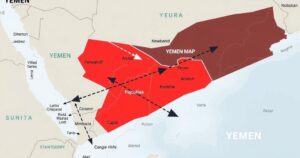Overview of the Yemen Uprising of 2011-2012

The Yemen Uprising of 2011-2012 erupted as part of the Arab Spring, aimed at overthrowing President Ali Abdullah Saleh. Protests were fueled by dissatisfaction with economic conditions and corruption, leading to violent confrontations. Eventually, Saleh agreed to transfer power to Vice President Hadi, culminating in a presidential election in February 2012, which furthered the political transition in Yemen.
The Yemen Uprising of 2011-2012 was influenced by the broader context of the Arab Spring, which initiated pro-democracy protests across the Middle East. These protests aimed to challenge the long-standing regime of President Ali Abdullah Saleh, who had been in power for over three decades. Activists criticized the economic challenges and political instability prevailing in Yemen, ultimately leading to mass demonstrations demanding Saleh’s resignation.
In January 2011, inspired by successful uprisings in Tunisia and Egypt, thousands gathered in cities across Yemen, including Sanaa, to rally against Saleh’s rule. Protesters highlighted issues of poverty and government corruption, with notable organization from a coalition of opposition groups. Although the protests initially remained largely non-violent, tensions escalated, leading to clashes with Saleh’s supporters.
Following persistent protests, Saleh attempted to appease demonstrators with economic concessions and promises not to seek re-election in 2013. However, these gestures were insufficient to quell the uprising, prompting protesters to demand his immediate removal from office. Violent encounters intensified, culminating in significant casualties when pro-Saleh forces opened fire on demonstrators.
The tide began to shift when Major General Ali Mohsen al-Ahmar declared his support for the protests, further undermining Saleh’s authority. As discussions regarding Saleh’s departure progressed, he initially offered to resign in January 2012 but later rejected the proposal after negotiations stalled.
In April, Saleh agreed to a plan by the Gulf Cooperation Council (GCC) to negotiate his exit from power with immunity from prosecution. However, this proposal unraveled after he failed to sign the agreement, leading to a resurgence in violence between rival factions in Sanaa. Despite a serious injury from a bomb attack in June 2011, Saleh continued to resist pressures for resignation.
Ultimately, after protracted negotiations, Saleh signed an agreement on November 23, 2011, officially transferring power to Vice President Abd Rabbuh Mansur Hadi. This agreement stipulated a presidential election set for February 2012, with Hadi as the singular candidate. Consequently, Hadi was sworn in on February 25, 2012, marking a pivotal transition in Yemeni governance.
The Yemen Uprising of 2011-2012, amidst the wider Arab Spring, illustrated a profound struggle against an entrenched leadership that had persisted for decades. The initiative mobilized various factions in Yemen to demand democracy and reform amidst escalating violence. Ultimately, the power transfer to Vice President Hadi signified a step toward change, though significant challenges remained for Yemen’s future stability.
Original Source: www.britannica.com







